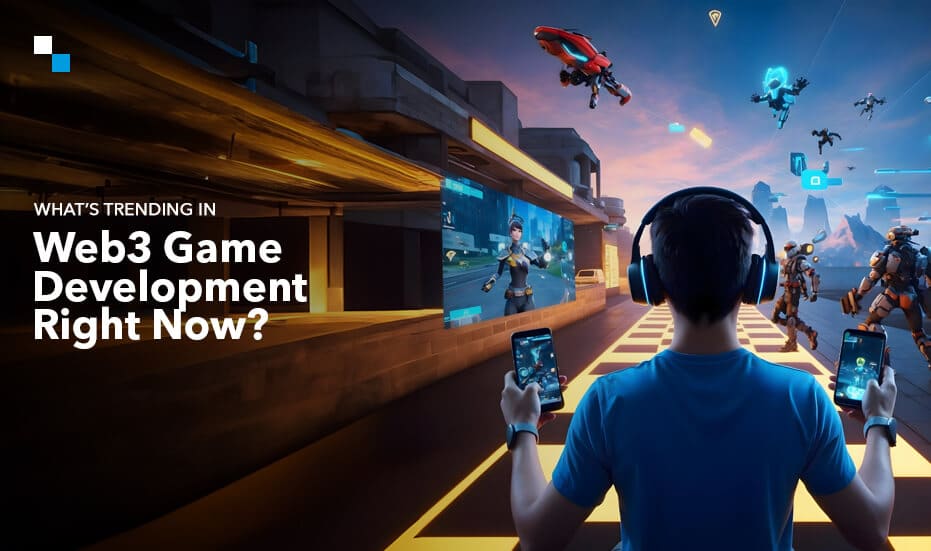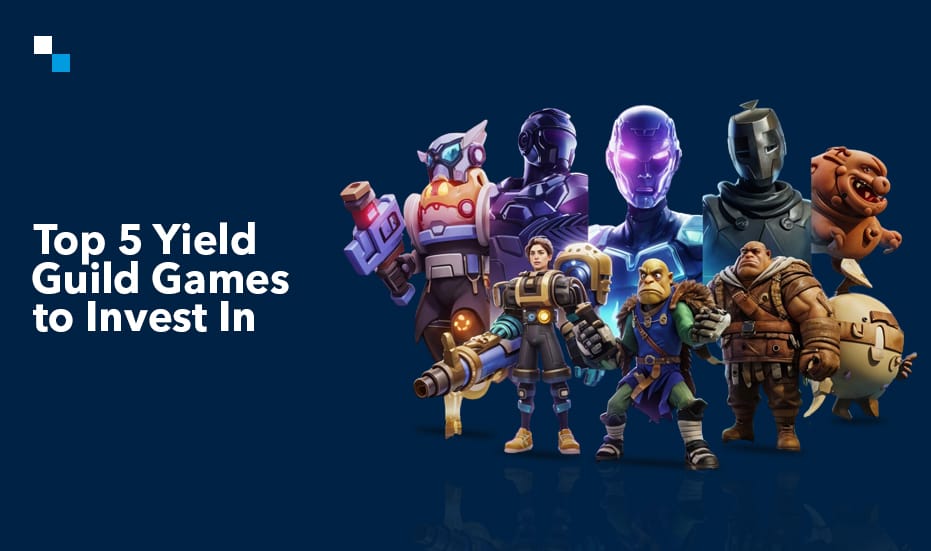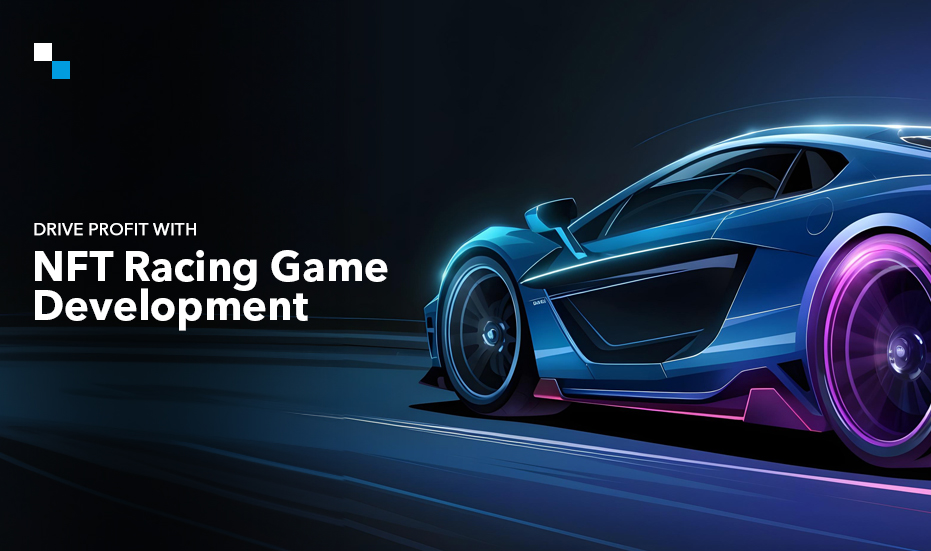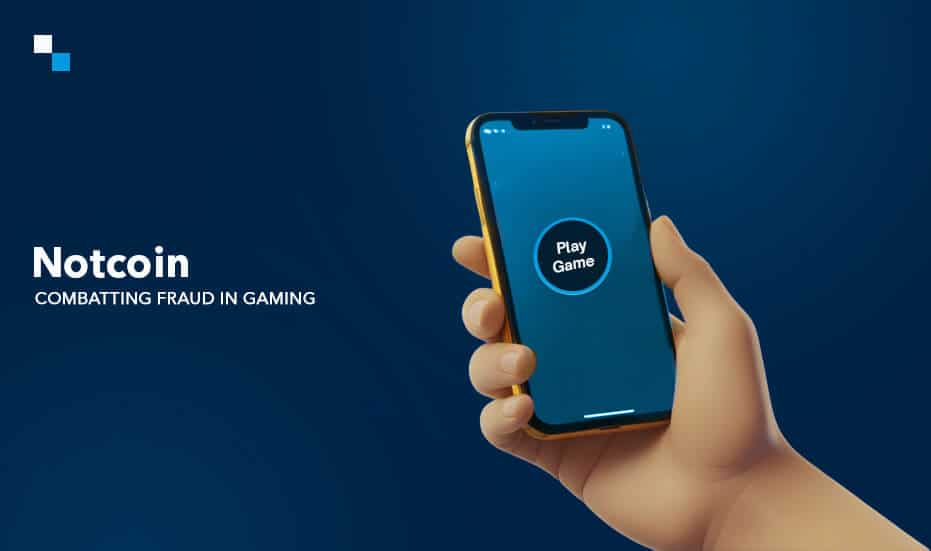
Metaverse in Supply Chain Management: Making Phygital Transformation To Operations
September 4, 2024
How to Navigate the Changing Global Regulatory Landscape of Asset Tokenization?
September 4, 2024Web3 technologies mark a sea change in the gaming landscape. Web3 game development is at the forefront, introducing fresh paradigms that reshape how one creates, plays, and monetizes games. An experienced Web3 game developer must be aware of current technological trends that help craft engaging and innovative experiences.
Facts & Figures
- Market Value: The global Web3 gaming market was valued at approximately $26.38 billion in 2023 and is projected to reach around $65.7 billion by the year 2027.
- User Growth: The active number of Web3 gamers has spectacularly grown to over 1.5 million active wallets interacting with decentralized gaming applications per month in the middle of 2023.
- Age Group of Players: Most Web3 gamers fall in the age bracket category of 18-34 years, largely being comprised of millennials and Gen Zs who understand more about digital assets and blockchain technology.
- Ethereum, Binance Smart Chain, and Polygon are the most adopted blockchains within the niche of Web3 gaming, though Polygon saw very high levels of adoption because of its low transaction fees and scalability.
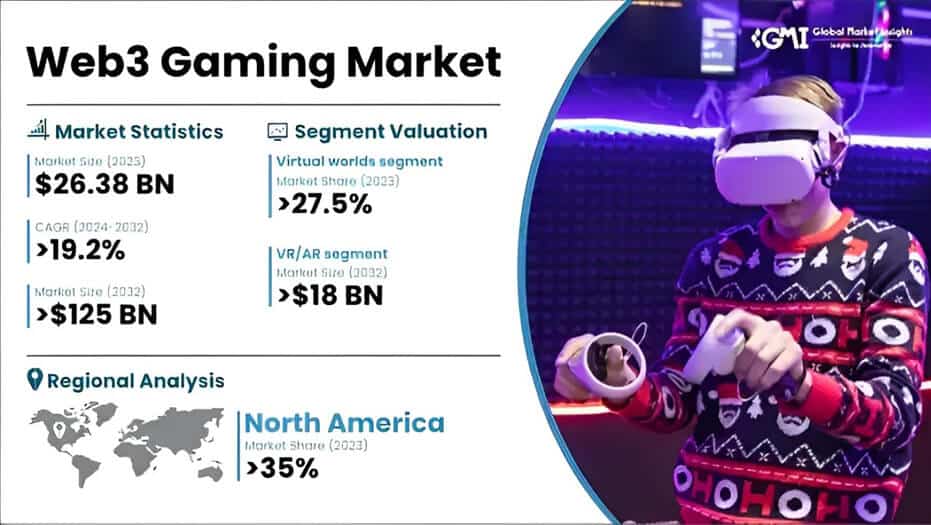
Trends That Are Reshaping Web3 Game Development
Let’s walk through some state-of-the-art trends that literally set the pace for the future of Web 3.0 game development.
1. Increasing Adoption of Layer 2 and Layer 3 Solutions
One of the most important challenges with developing games on Web3 has been scalability and transaction cost. Layer 2 and Layer 3 solutions take these challenges head-on:
- Layer 2 solutions: Protocols like Polygon, Arbitrum, and Optimism gradually attract attention with promises of faster and less expensive transactions but without compromising on the main chain’s security.
- Layer 3 Network: Moving up further from Layer 2, much more scalability and specialization for gaming applications can be achieved here.
Web3 game developers leverage these technologies to be able to provide more responsive and cost-efficient gaming experiences, which allow for real-time gameplay and microtransactions instead of the latter option on base layer blockchains.
2. Cross-Chain Compatibility
Interoperability is becoming a key focus in Web 3.0 game development:
- Shared Asset Standards: Developers are creating games with assets that can be used across multiple games and platforms.
- Universal Wallets: The same wallet can be used across a variety of games for asset and identity management by a player.
This trend is creating a more connected gaming community where players’ successes and ownership bear a certain weight outside the confines of one game.
3. X to Earn Model
The “X to Earn” model is expanding beyond the well-known Play-to-Earn:
- Move-to-Earn: Games that reward active physical movements.
- Learn-to-Earn: These sets of games reward knowledge acquisition through participation in educational games.
- Create-to-Earn: Platforms reward users for creating content within the website.
Web3 game development specialists are continually innovating ways of combining real-world activities with in-game rewards, further blurring the boundary between virtual and physical experiences.
4. Evolution of the Play-to-Earn Model
Popular P2E games like Axie Infinity, The Sandbox, and Decentraland have attracted millions of users. While Play-to-Earn has been the cornerstone of Web3 gaming until now, it is evolving:
- Sustainable Economies: A lot of work is going into making game economies more balanced and sustainable so that they can survive for a longer period.
- Skill-Based Rewards: Grinding does not apply in most of the games these days, but games give rewards for strategy and skill applied.
- Hybrid Models: Conjoining free-to-play with play-to-earn components for a broader reach.
This has shifted the focus to developing entertaining gameplay, where the earning potential is the icing on the cake, not the core of the approach.
5. DAO-Driven Game Development
In the landscape of Web3 game development, Decentralized Autonomous Organizations (DAOs) are assuming a more prominent role.
- Governance: Community governance through token-based voting allows the use of gamers’ choices in the decision-making process about game development.
- Crowdfunded Development: The development of new games will be crowdsourced and directed by DAOs.
- Player-owned games are those that are entirely owned or operated by DAOs, thus giving players completely new control over the gaming experience.
This is a trend that democratizes game development, and at the same time, increases the closeness of contact between developers and their communities.

6. Metaverse Integration
The concept of the metaverse is closely intertwined with Web 3.0 game development:
- Persistent Virtual Worlds: Games are becoming part of larger, interconnected virtual spaces.
- Digital Real Estate: Players can own and develop virtual land that exists within and beyond individual games.
- Social Experiences: Social experiences can be considered a prime focus of metaverse games, enabling them to build up their communities rather than just conventional gameplay.
Web3 game developers are creating experiences that exceed the limits of classic games, building the rising metaverse ecosystem.
7. AI and Machine Learning in Game Design
Artificial Intelligence is revolutionizing Web3 game development:
- Dynamic Game Worlds: AI is being used to create ever-changing environments and storylines.
- Personalized Experiences: Machine learning algorithms tailor game difficulty and content to individual players.
- NPC Intelligence: Non-player characters are becoming more real and responsive and, therefore more immersive.
These are now allowing Web 3.0 game development firms to create sophisticated and responsive gaming experiences targeted at their audience.
8. VR and AR in Web3 Games
VR and AR will be included in Web3 games.
- Immersive Gameplay: VR is creating completely immersive Web3 gaming experiences.
- Real-World Integration: AR is integrating Web3 game elements into the real world.
- NFT Visualization: VR and AR will open more avenues of exposure and interaction with in-game NFTs.
These are technologies that open completely new perspectives in terms of the level of interaction of players with Web3 games and digital assets.
9. GameFi and DeFi Integration
The lines are blurring between gaming and decentralized finance.
- In-game DeFi: Staking, lending, and yield farming are getting integrated into games.
- Tokenization of in-game assets: turning items inside games into financial instruments that can be traded or used as collateral.
- Cross-Game Financial Ecosystems: Eventually, GameFi projects will build financial ecosystems across a variety of different games and platforms.
This integration creates new economic models in these games and gives players new ways of interacting with the digital assets.
10. AI-Generated Content
AI is influencing gameplay and changing content creation:
- Procedural Generation: The AI algorithms are generating immense and unique game worlds and quests. Besides, the creation of textures and models, sometimes even music with the help of tools already based on AI.
- Narrative Generation: The use of artificial intelligence keeps storylines and dialogues dynamic; hence, every replay should be unique and different.
This trend thus allows web3 game developers to create more content on fewer resources and therefore create richer, more diverse gaming experiences.
Conclusion
While the landscape of Web3 game development is changing at a highly fast pace, certainly, we have only scratched the surface of this revolutionary space. From the increasing use of Layer 2 and Layer 3 solutions to integrating AI-generated content, the future is filled with possibilities in Web 3.0 game development.
Being one of the leading web3 game developers, Antier is well-positioned in order to steer through these emerging trends and help bring something innovative into reality regarding experiences in gaming. From creating immersive metaverse experiences and implementing novel economic models to leveraging cutting-edge technologies such as VR and AR, there are limitless possibilities in the arena of Web3 gaming.
Collaborate with visionary game developers, and forward-thinking blockchain experts at Antier today!
